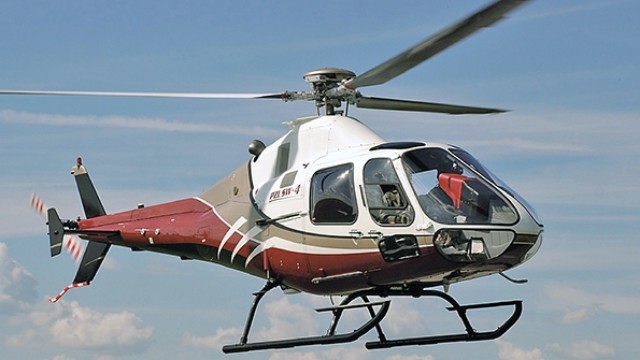
Leonardo’s new SW-4 Solo would be an optionally manned derivative of this SW-4 light turbine helicopter,
Leonardo is studying concepts for a second-generation rotary-wing unmanned air vehicle for use in both land and maritime environments. The European manufacturer is building on its experience with its AWHero 150-kg (330-lb.) light rotary-wing UAV and the SW-4 Solo, an optionally manned derivative of the SW-4 light turbine helicopter built in Poland.
The company has used both platforms in a range of trials in Italy and the UK.
Leonardo own studies suggest that a future rotary-wing UAV force can be operated in the same quantities as the current generation of rotorcraft, thanks to significant savings in personnel and training.
Speaking at the International Military Helicopter conference in London on Jan. 31, Tony Duthie, the company’s head of market development, told delegates that the company is envisaging a next-generation UAS weighing in at between 1 and 2 metric tons with an endurance of around 12 hr. operating 100 nm from a ship or land base with a 125-kg payload of sensors.
“We can develop a platform, 50% cheaper than the acquisition price of a [AW159] Wildcat using one-third of the personnel, we can generate the mass required for land and maritime environment missions.”
He says that with training done synthetically, there would be no need for a fleet of platforms for training, allowing the whole fleet to be used in the frontline force.
The company also says that it would go on to use the technologies envisioned in the rotary-wing UAV in its manned platforms.
The company showed concept images of a wing-in-fan air system, rather like the company’s Project Zero technology demonstrator, but Duthie said the images were purely concepts and that the company was exploring a full range of approaches to the platform’s propulsion, including hybrid electrical systems. A key challenge for the program will be to develop a system with 12-hr. endurance. Airbus is planning to use a diesel engine in its VSR700 platform to extend endurance to 10 hr. Duthie says the Leonardo platform will have a significant fuel fraction of between 600 and 1,200 kg. depending on the system’s final weight.
Leonardo believes that navies will begin to put small rotary-wing UASes onto warships from around 2020, while larger, armed platforms will begin to appear during the late 2020s. It also suggests that the current generation of manned helicopters currently used on warships could become optionally piloted from the late 2020s.
The UK and Italy, home markets of Leonardo, are planning trials of naval UAVs during 2018, with the AWHero system expected to land on the back of a British Royal Navy Type 23 as part of a technology demonstration by the end of the year.
Source: Aviation Week

Apparently Leonardo wants to believe that electric aviation and distributed propulsion are not a reality. They would be better off investing in those areas rather than using 1950’s old technology….which a carbon intensive and polluting and will never provide high ROI.
Sad to see European Aerospace sector lagging behind China now.
A shame for all the industry.
Leonardo has its own views, but is not the entire European Aerospace Sector. What about Airbus Helicopters views ? If they have the same views, are both wrong ?